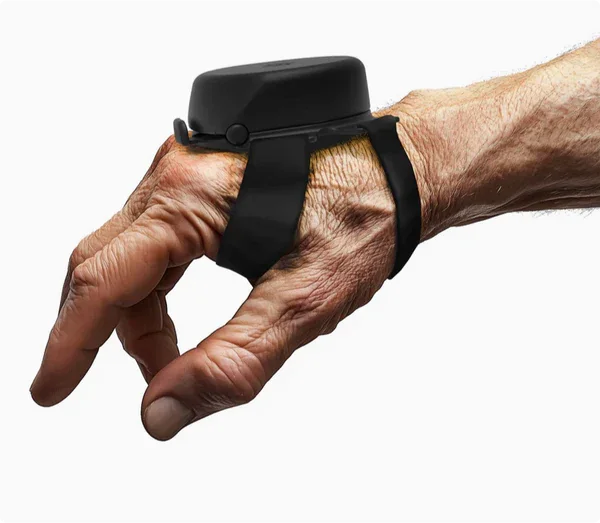For the majority of us, writing is so natural! Namely, to sign one’s name, write a grocery list, or even an outline for a birthday card. Yet, due to tremors or Parkinson’s, maintaining even handwriting can begin to be the first personal skill to fade away. Words are more than just ink on paper; they reflect expression, identity, and the quest for independence.
That is the bright side of it: There is no permanent loss of clear handwriting. A growing array of adaptive tools, cutting-edge technology, and supportive techniques provides one with ever-increasing means to regain control over handwriting, which is rewarding in its own right.
The Emotional Weight of Losing Handwriting
Before setting solutions, one must acknowledge the emotional toll that comes with determining fine motor control. Many people with hand tremors often feel frustrated, grieved, or ashamed, as they are no longer able to sign their forms, write checks, or jot down personal notes. This feeling has often been attributed to a loss of agency, which is more pronounced for older individuals who spend more time with pen and paper than with a keyboard. However, with some patience and the right tools, you can easily reconnect your thoughts with pen and paper.
Understanding the Root of the Challenge
Tremors from essential tremor (ET) or Parkinson’s disease (PD) cause harm to those small muscles handling fine movements in the hand. These involuntary shakes make it virtually impossible to draw straight lines or form letters. ET typically presents with an action tremor (tremor while in motion), whereas PD is generally characterized by a rest tremor that slightly diminishes with movement, thereby impeding fluidity.
In both cases, the main problem is instability during motion. Well, here is where assistive technology comes into play — not to cure but to compensate, support, and restore control.
Tools That Help You Write Again
1. Weighted Pens and Ergonomic Grips
These are some of the simplest and most effective solutions. Weighted pens simply add mass and give tremors something to overcome, partially reducing their impact through added proprioceptive feedback – basically, their hand has something “to push against.”
2. Stabilizing Gloves and Braces
Wearable solutions such as Steadiwear’s Steadi-One glove leverage smart mechanical damping to mitigate hand tremors in real-time. These devices are not intended solely for writing, but also provide significant assistance with other fine motor tasks, such as using utensils or manipulating a pen. The glove is passive, battery-free, and does not utilize electronics, so it stabilizes only when you are in motion, while also still allowing for rest and writing with added precision.
Writing Techniques That Work with Tremors
While tools can certainly help with writing, so can minor behavior changes. Below are strategies occupational therapists use:
- Slow down: Write very intentionally, taking breaks between each word to control tremors from developing.
- Anchor your wrist or elbow: Any part of your arm on the table will stabilize the movement.
- Use lined or graph paper: Visual clues keep your words organized.
- Write in block letters: Sometimes it is easier to print everything, as opposed to cursive, for more severe tremors.
- Try a slanted writing surface: This is more supportive for your arms and wrists.
Extra hand exercises —such as squeezing putty, finger-tapping, or practicing large arm movements—also help create muscle retraining and coordination over time.

When to Seek Professional Support
If you encounter handwriting difficulties in your everyday life, consider having an evaluation with an occupational therapist who specializes in adaptive strategies for fine motor challenges and can customize a plan for you. In some situations, tremors may even be treated medically, such as beta blockers for ET, or dopamine therapy for PD. While writing may not become optimal as it once was, it is standard to see improvements with proper tools, treatments, and training.
How the Steadi-3 Glove Supports Handwriting Independence
The Steadi-3 Tremor Glove delivers a one-time opportunity for those with essential tremor or Parkinson’s disease to regain their ability to write. Our glove is designed with state-of-the-art motion-adaptive technology that provides real-time tremor stabilization, allowing individuals to move naturally.
Our glove only filters out tremors when necessary, allowing users to complete fine motor tasks such as writing, drawing, or signing their name with the same control and ease as before their tremors. The lightweight, battery-free design makes it easy to use throughout the day and functions as a comfortable and non-intrusive tool to afford the independence they require on a day-to-day basis. It’s much more than a glove; it’s an access point back to the everyday joys of life and self-expression.
Final Thoughts: Rewriting Possibilities
When you lose the ability to write by hand, you do not lose your voice. Whether you return to pen and paper, change to technology-based adaptations, or a mix of both, you can reclaim your autonomy. The important thing is to try things out, be patient, and maintain hope. Whether with adaptive writing devices, such as weighted pens or a smart glove, or even adaptive writing fortifications, you can still have your words released into the world, confidently and beautifully.
Do you know someone who experiences difficulty writing due to hand tremors? Please share this post with them — every story deserves to be written.












